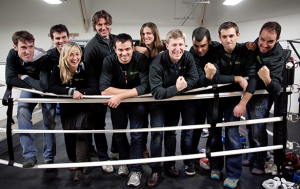Remember the “telephone game” when you were a kid?
You’d whisper, “I had ham and eggs for breakfast this morning,” to the person to the right and by the time it made its way around the circle the last person would say, “Santa has ham for legs and just installed new flooring.”

Well the same thing happens when real estate comps are traded.
In commercial real estate brokerage the lease comparable or “comp” is a summary snapshot of a transaction that includes all the relevant deal points such as the rental rate, square footage, length of term and concessions. Simply put, it is one of the most accurate real-time indicators of what tenants are willing to pay to lease space in a market at a specific point in time.
Comps are traded predominantly amongst brokers, landlords, lenders and appraisers, however there is no central repository for this information. Each party or their respective company or firm maintains their own proprietary database where this comparable information is kept; and this comes with its own challenges.
With such a fragmented method of assembling, compiling and maintaining this data it’s impossible to warrant its accuracy. For example, I’ve received comps for the same transaction but from different brokerages, and they have all had conflicting information – inconsistencies in the lease expiration date, tenant improvement package, rental schedule,etc.
Also, there are severe limitations to only being able to search your own firm’s database. What if the data you need existed somewhere out there but your firm didn’t have it? Well then you’d just have to hunt around until you found it, which can be very time consuming.
CompStak is a new, crowd-sourced model that allows CRE professionals to contribute lease comps and then earn points for what they’ve submitted. They can then trade the points that they’ve earned for details on other comps that are more relevant and important to them.
This is huge for a few reasons. First, having a centralized database that everyone contributes to encourages data integrity and market transparency. Simply put, verified, accurate data benefits everyone involved. Second, being able to magnify the scope of a search by accessing a much larger, more robust database makes me a better-informed broker and ultimately, allows me to provide better service to my clients.
CompStak is currently available in San Francisco and Manhattan, with plans to eventually go national. Personally, the service has already proven its worth in at least two recent transactions and I look forward to their continued success.
Hopefully now when I say, “three months free with $25 per square foot in TI’s,” it doesn’t get translated into, “tree trunks free with $25 in bacon flavored toothpaste”.
Related news: Commercial Real Estate Tech Company CompStak Makes Bay Area Inroads











